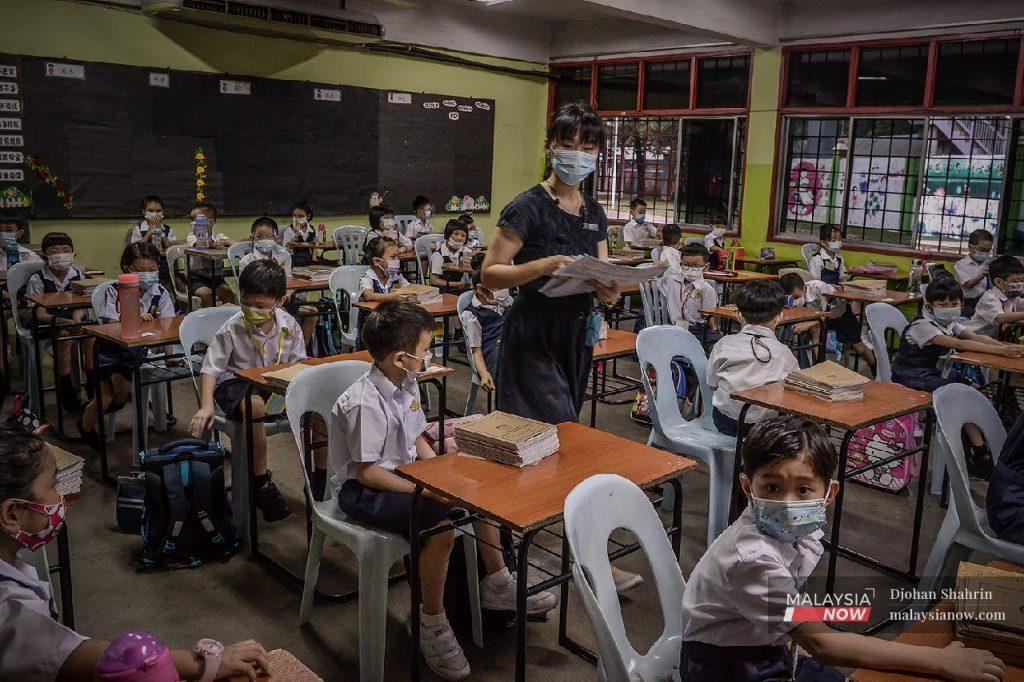Teaching will never be the same again
As the saying goes, 'the world needs more teachers' but educators will have to adapt to the changes and challenges brought on by the pandemic.
Just In
As Malaysia celebrates Teachers’ Day this month, we cannot help but look back at the year many educators have had.
Many teachers would agree that being an educator in 2020 was not the easiest. We were thrown in the deep end, filled with anxiety and endless questions – How can we conduct lessons virtually? What about the students with no internet access? What happens if schools decide never to reopen?
We may not know everything, but we are always willing to go the extra mile to adapt and inspire the students in classrooms.
If you were one of the educators who were overwhelmed by the new reality of what did not make sense then, this piece is for you.
Personally, one of the most difficult challenges was dividing time between teaching, engaging with students, other administrative tasks, and self-care. Some other educators also had to take on an additional role as a parent to their little ones at home.
Keeping up with the needs of students, family, and friends while being an educator during a pandemic was undoubtedly overwhelming. Here, I learnt that self-care is essential for my well-being and to be an effective educator, I had to know how to regulate my own emotions and mental health before knowing how to care for my students and fellow teachers.
This also made me realise the importance of our roles as educators in providing students with the right tools and endless support to navigate the unprecedented year. At the height of the pandemic last year, many students faced issues studying online due to poor internet connection and not having enough electronic devices. In fact, more than one third or 36.7% of students in Malaysia had no access to electronic devices at all, while others had to miss classes as they were required to help their families stay afloat during the pandemic.
This caused them to feel stressed, unmotivated, lonely, and helpless. As the frontliners of the education system, teachers need to build a good relationship with students by caring for them as individuals and human beings instead of learners. Ultimately, this will help inspire and spark students’ interest in the lessons taught, whatever the means may be.
While I struggled to transition into a new education structure, I also learnt that education is a two-way communication where teachers are also learners. Learning new ways to engage with students and relearning a topic through various teaching materials put educators in a humble position, and at the same time, brought joy to the experience.
It was also truly fascinating to observe how the senior teachers learnt to adopt technology in their lessons as the pandemic became an opportunity for both educators and students to develop stronger IT skills.
How can we future-proof learning?
Future-proofing education begins with us. As a progressing society, we need to revamp our mindset of what education is and strengthen our roles by providing greater emphasis on life skills. From the beginning, educators have been seen as the pillar on which to build a resilient and empowered generation. Students come to school because it is a safe avenue for them to learn, make mistakes, and start again.
In today’s pandemic world, it has become essential for teachers to encourage one another and collaborate by pooling resources and expertise to enhance students’ learning experience in project-based learning. That way, students will be more adaptable in the face of setbacks and more empowered to continuously find solutions to any difficulties or crisis, be it completing homework or finding ways to reconnect with teachers and classmates.
This also lifts the weight off our shoulders as educators who are constantly anxious and affected by the rapid changes in the pandemic.
When we talk about future-proofing learning, we cannot ignore the increasing need for technological aid in schools. This means access to a physical device, connectivity, and knowledge in using them. When the pandemic hit, students without devices for virtual learning fell behind in their studies and some missed out on lessons throughout the study period. It not only affected them academically but mentally as well.
With technological aid, educators will be able to teach students how to seek knowledge while leveraging current and accessible technologies. Today, credible information, research studies, and learning materials are widely available with one Google search.
As educators, we need to remind ourselves and recognise the opportunities given to continue providing lessons for our students and nurture growth in self-development.
For instance, shift the focus from an educator whose traditional role is to provide materials for the students to the role of a facilitator instead. Through this, students can increase their confidence in adopting technology, gain digital intelligence and learn how to be resourceful with the information at hand.
Continuing the journey together
My time as a secondary school teacher ended too quickly, but I am extremely privileged to have the support of Fellows in Teach For Malaysia (TFM) and 3M, who helped sponsor my time in teaching science to my 150 students.
As the saying goes, “the world needs more teachers”, and I am determined to walk hand in hand with all educators and teach. There are many other activities and lessons left to be shared. For example, bringing more exposure to the STEM field and exposing students to real-life issues and topics such as sustainable development goals, peace ideals and global issues.
Today, many youth leaders and inspiring figures are finding new ways to make tomorrow better, and I believe teachers are the gateway to these possibilities.
The views expressed in this article are those of the author(s) and do not necessarily reflect the position of MalaysiaNow.
Subscribe to our newsletter
To be updated with all the latest news and analyses daily.
